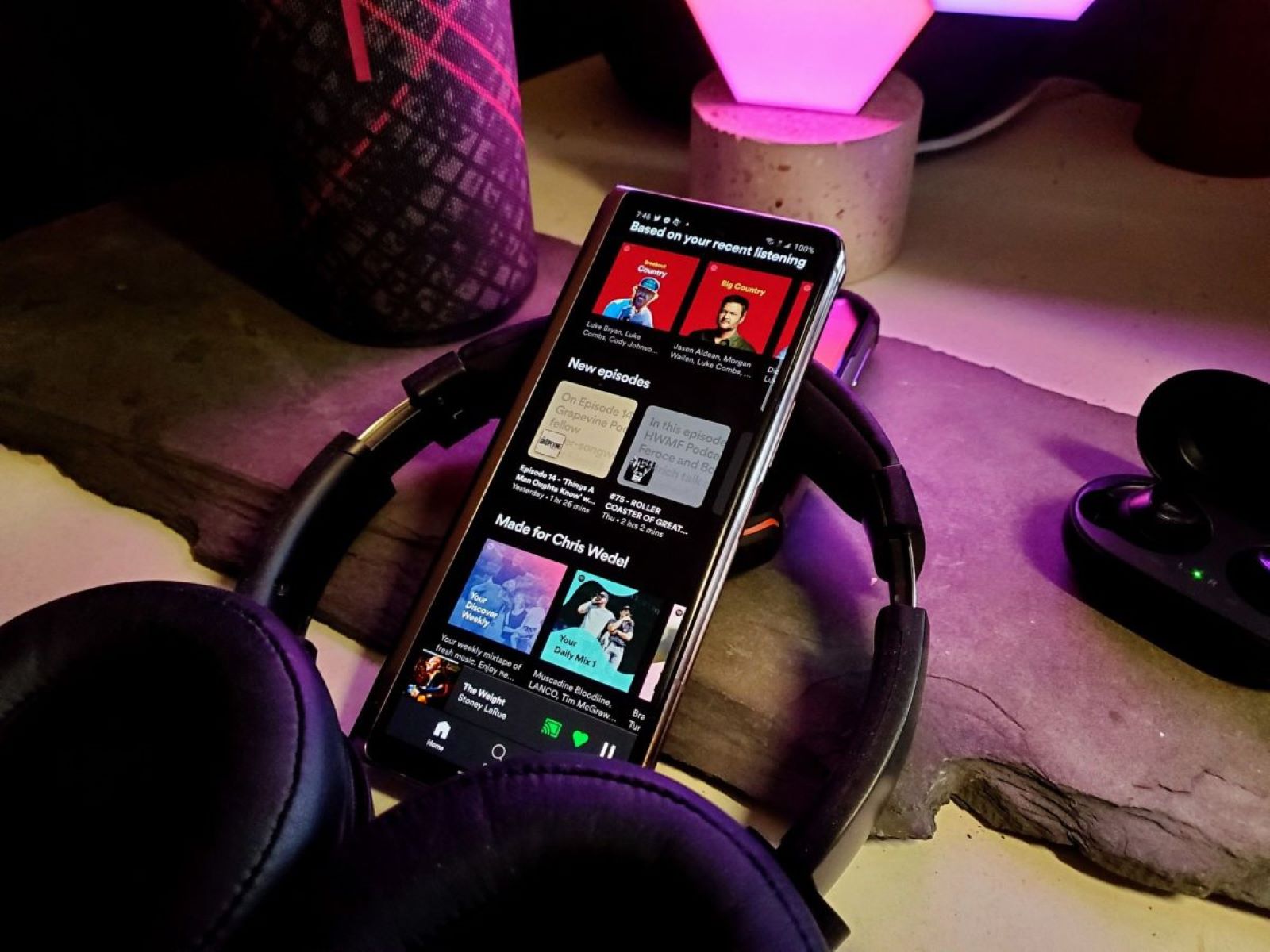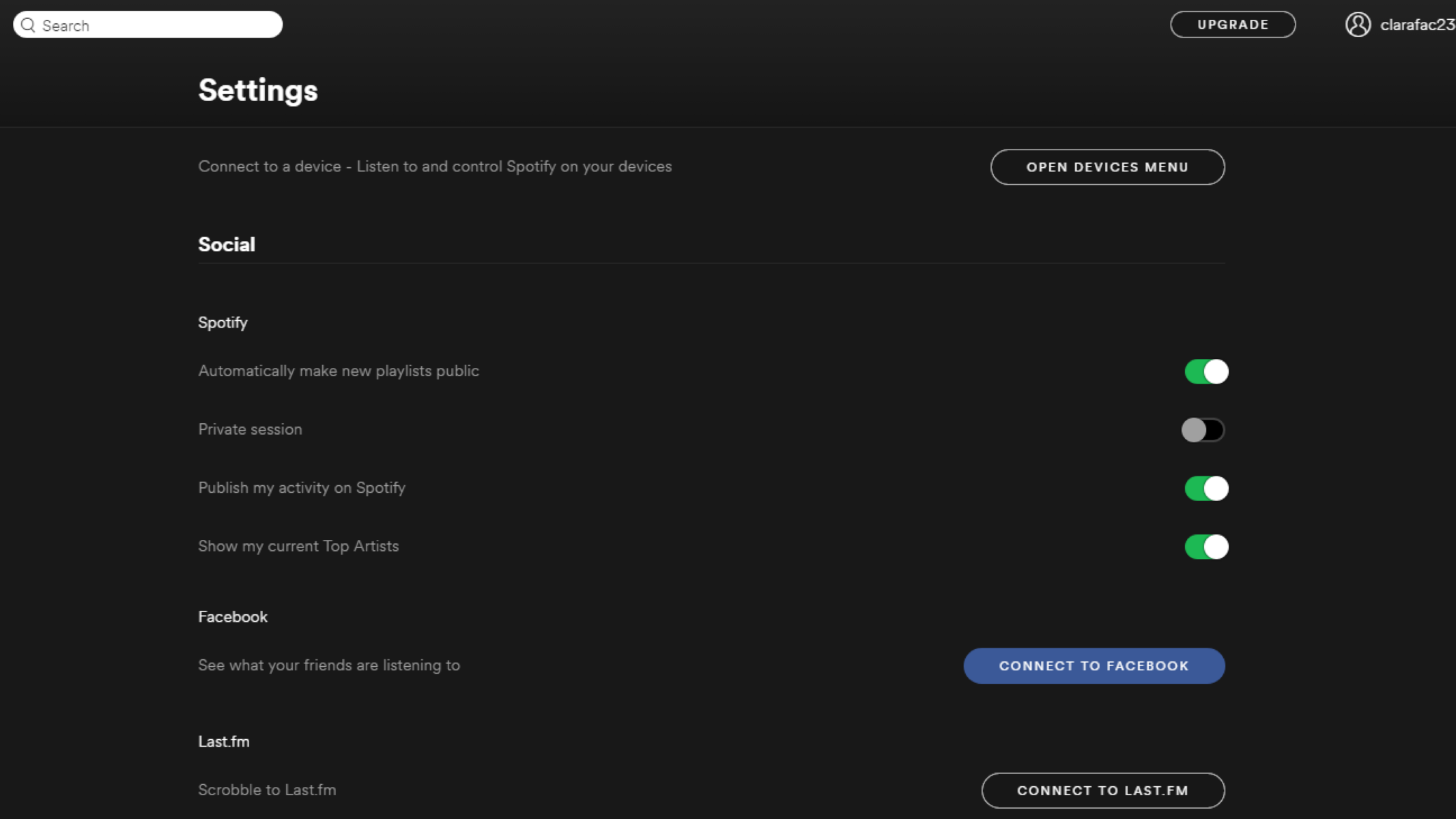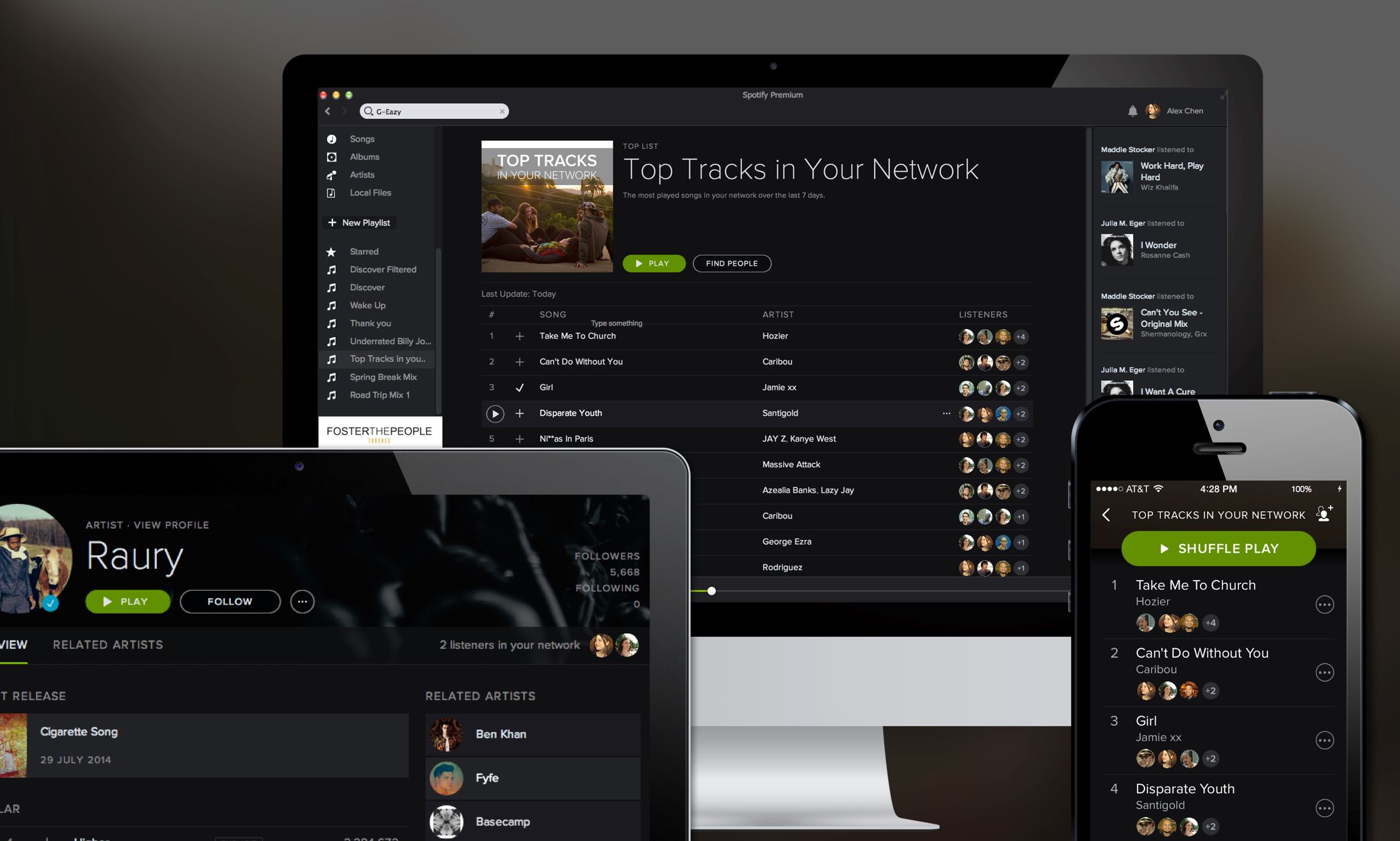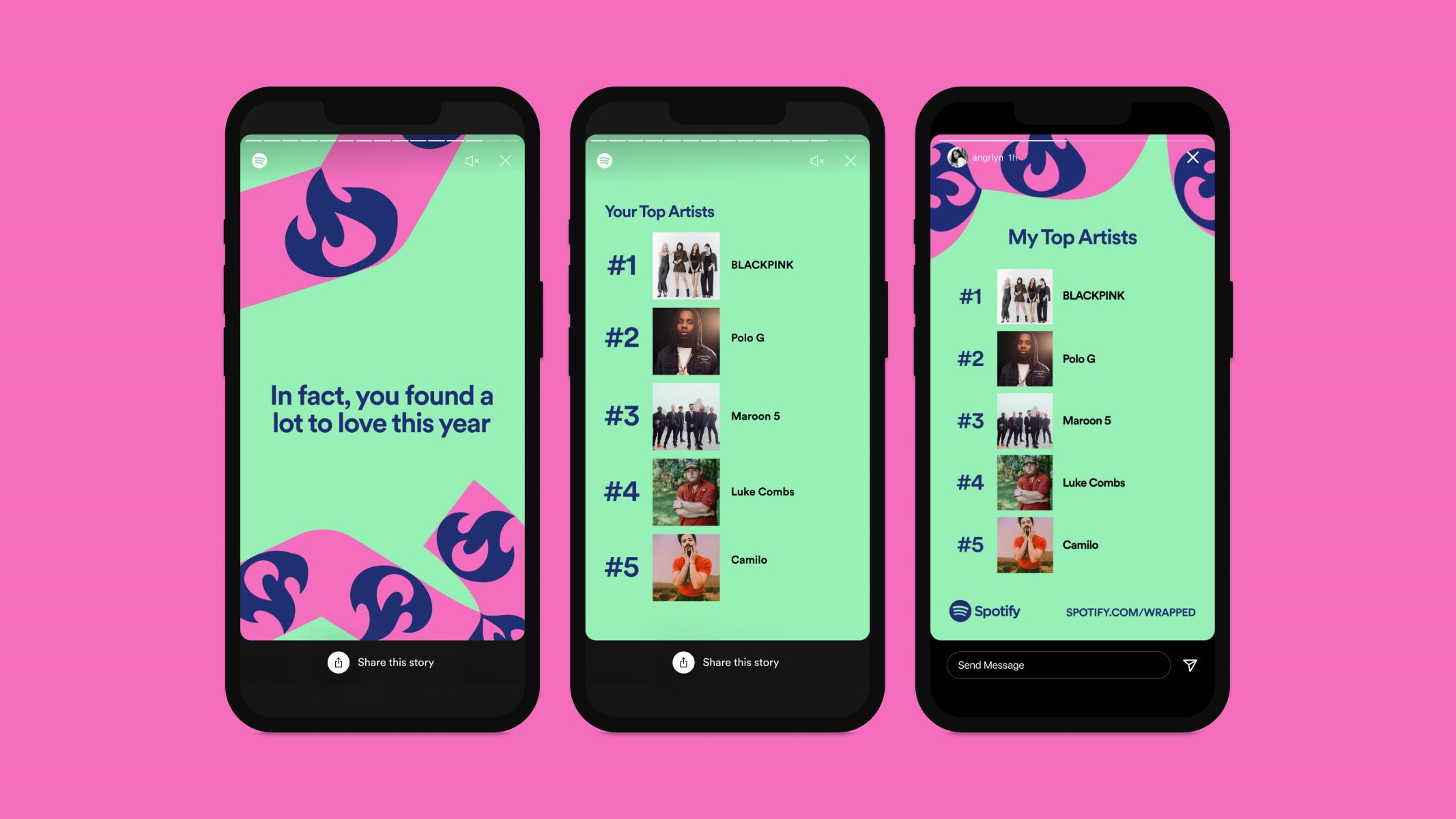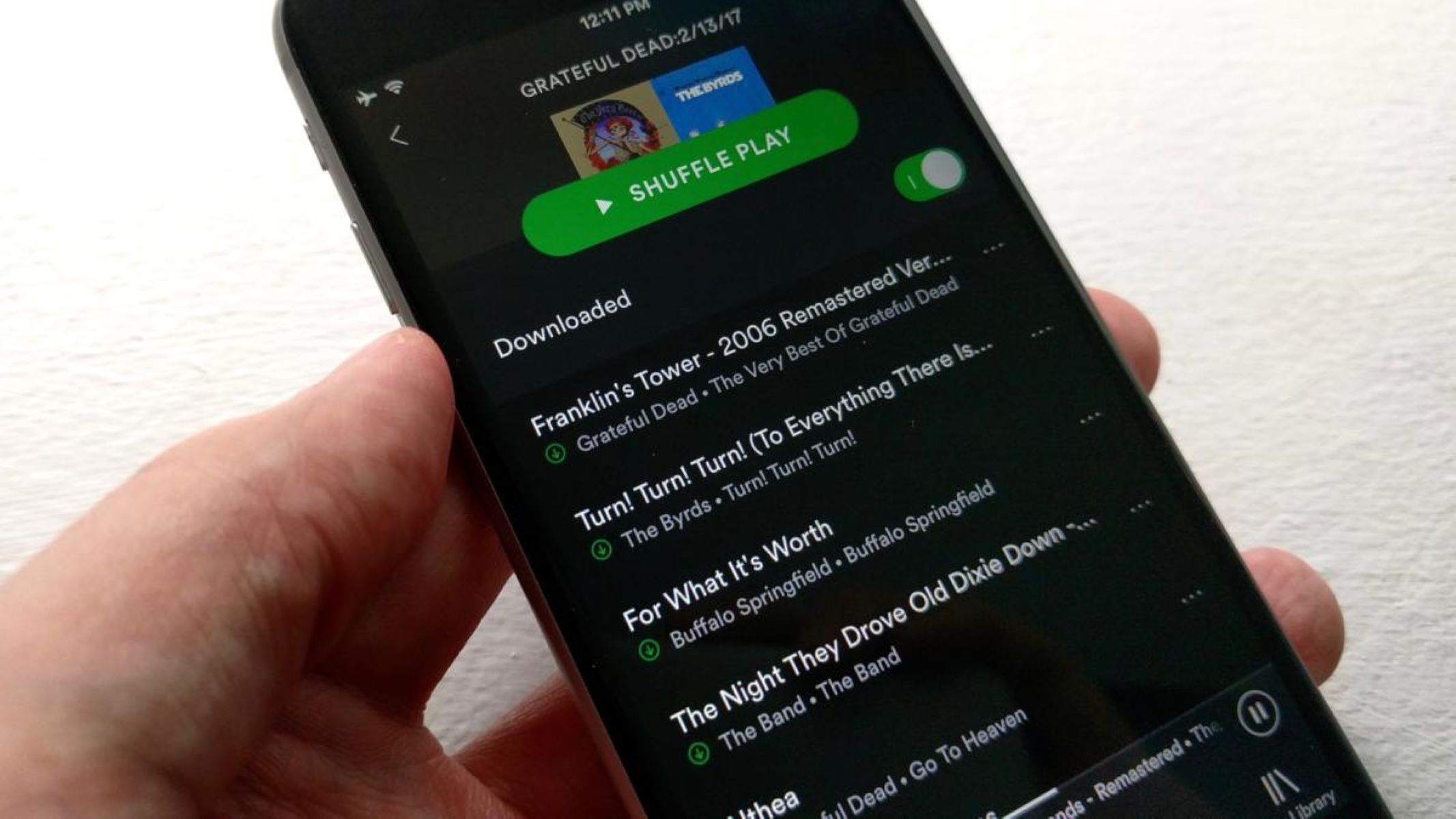Introduction
Streaming has revolutionized the way we consume music, and platforms like Spotify have become an integral part of our daily lives. With access to millions of songs at our fingertips, we can instantly enjoy our favorite tunes anytime and anywhere. But have you ever wondered how many times you’ve listened to a particular song on Spotify? Whether it’s a catchy chorus that gets stuck in your head or an emotional ballad that resonates deeply, knowing the play count of a song can provide insight into your personal musical journey.
While Spotify doesn’t offer a built-in feature that displays the exact number of times you’ve played a specific song, there are several methods you can use to get an estimate. In this article, we will explore these methods and guide you on how to discover the play count of your favorite tracks.
By knowing how many times you’ve listened to a song, you can gain a deeper understanding of your music preferences, discover new artists and genres, and even reminisce about special moments associated with specific songs. Whether you’re an avid music lover, a casual listener, or a data enthusiast, finding out your play count can be a fascinating endeavor.
In the following sections, we’ll outline different approaches to determine the number of times you’ve played a song on Spotify. We’ll cover methods using the Spotify desktop app, third-party websites or apps, as well as a manual tracking option. Additionally, we’ll discuss how you can analyze your listening habits using the available data.
What is Spotify?
Spotify is a popular music streaming service that provides access to a vast collection of songs, podcasts, and other audio content. Launched in 2008, Spotify quickly gained popularity due to its user-friendly interface, extensive music library, and personalized features.
With Spotify, you can create playlists, follow your favorite artists, discover new music through curated playlists and recommendations, and even share your favorite tracks with friends through social media. The platform offers a free ad-supported tier as well as a premium subscription that provides additional benefits such as ad-free listening, offline playback, and higher audio quality.
One of the key features of Spotify is its ability to adapt to individual users’ preferences. The platform utilizes algorithms and data analysis to curate personalized playlists and recommendations based on your listening history, liked songs, and artists you follow. This personalized approach allows Spotify to cater to a wide range of musical tastes, making it a go-to platform for music lovers worldwide.
In addition to its music offerings, Spotify also provides access to a diverse range of podcasts. From true crime and educational podcasts to comedy shows and motivational talks, there’s something for everyone. The platform’s podcast section allows users to browse and discover new podcasts, follow their favorite hosts, and stay up-to-date with the latest episodes.
Spotify has a strong presence across multiple devices and platforms. You can access the service through a desktop application, a web player, or mobile apps compatible with iOS and Android devices. This multi-platform availability ensures that users can enjoy their favorite music and podcasts wherever they are, whether they’re at home, on the go, or at the gym.
Overall, Spotify has revolutionized the way we listen to music and engage with audio content. Its expansive music library, personalized features, and seamless user experience have made it a leading player in the streaming industry. With millions of users worldwide, Spotify continues to evolve and innovate, providing a platform for both established and emerging artists to connect with their fans.
Why would you want to know how many times you’ve listened to a song?
Understanding the number of times you’ve listened to a particular song on Spotify can offer various benefits and insights into your music preferences and habits. Here are a few reasons why you might be interested in knowing your play count:
1. Nostalgia and Memories: Certain songs have the power to transport us back to specific moments in our lives. By knowing how many times you’ve listened to a song, you can revisit those memories and relive the emotions associated with the music. It’s like unlocking a time capsule of your musical journey.
2. Discovering Personal Favorites: Tracking your play count can help you identify your all-time favorite songs. By analyzing the play counts of different tracks, you can determine which songs you gravitate towards the most. This knowledge can guide you in creating playlists tailored to your preferences and discovering similar songs or artists.
3. Assessing Music Trends: Keeping track of your play count allows you to observe patterns in your listening habits over time. You may notice shifts in genre preferences, seasonal trends, or even changes in your mood reflected in the music you listen to frequently. This information can provide valuable insights into your musical journey.
4. Evaluating Artistic Impact: For musicians or aspiring artists, knowing the play count of their songs can help gauge the reach and impact of their work. It provides a sense of validation and an understanding of how their music resonates with listeners. Additionally, high play counts can serve as a metric for evaluating the popularity and success of a particular track.
5. Sharing and Recommendations: Sharing your most-played songs with friends and family can be a fun way to exchange music recommendations and discover new tracks. It can spark conversations and create connections based on shared musical tastes. Additionally, knowing your top-played songs can help you curate playlists or recommend songs to others based on your personal favorites.
6. Personal Achievement: Achieving a high play count on a song you love can be a personal accomplishment. It indicates the amount of time and devotion you’ve invested in listening to that particular track. It’s a small but satisfying milestone that showcases your dedication to the music you enjoy.
By understanding the reasons behind wanting to know your play count, you can appreciate the significance of tracking your listening habits on Spotify. It’s not just about the numbers; it’s about the emotions, memories, and experiences that music brings to our lives.
Method 1: Using the Spotify desktop app
The Spotify desktop app provides a straightforward method to get an estimate of how many times you’ve listened to a song. Follow these steps:
- Open the Spotify desktop app on your computer.
- Navigate to the song you want to check the play count for. You can search for the song directly or find it in your playlists or library.
- Right-click on the song and select “Add to Playlist”. Create a new playlist specifically for tracking play counts.
- Once the song is added to the playlist, right-click on the song again and select “Go to Playlist”.
- In the playlist view, you’ll see an icon that resembles a bar chart. Click on it to switch to the “Stats for Nerds” view.
- In the “Stats for Nerds” view, you’ll find various technical details about the song, including the play count. Look for the line that says “Play count” and note the number displayed.
It’s important to note that this method provides an estimate rather than an exact play count. The play count displayed is based on the song’s play history on Spotify for the specific device you’re using. If you listen to a song on multiple devices or if you’ve recently cleared your play history, the displayed play count may not be entirely accurate.
Using the Spotify desktop app to track play counts is a convenient option as it allows you to access the feature directly within the Spotify interface. However, it’s worth noting that this method is limited to songs in your library or playlists and doesn’t provide an overall play count for all songs on your Spotify account.
Now that you know how to use the Spotify desktop app to estimate play counts, let’s explore additional methods using third-party websites or apps to gather even more comprehensive play count data.
Method 2: Using third-party websites or apps
If you’re looking for more comprehensive play count data or want to track play counts for songs that are not in your library or playlists, you can turn to third-party websites or apps. These services integrate with Spotify and provide additional features to analyze your listening habits. Here’s how you can use them:
- Search for reputable third-party websites or apps that offer play count tracking for Spotify. Some popular options include Last.fm, Soundiiz, and SpotOnTrack.
- Create an account or log in using your Spotify credentials.
- Follow the instructions provided by the website or app to connect your Spotify account and grant access permissions.
- Once your account is connected, you can explore the various features and options available.
- Many of these services offer detailed statistics and insights into your listening habits, including play counts for individual songs.
- Find the section or option that displays play counts and search for the specific song you want to track.
- The service will provide you with the play count information for that song, typically displaying both the total play count and the play count within a specific time period.
Using third-party websites or apps can provide a more comprehensive and detailed view of your play counts across various songs and artists. These services often offer additional features like personalized recommendations, playlist management, and social sharing options. They can help you further explore your musical preferences and discover new tracks based on your listening history.
However, it’s important to exercise caution and only use reputable and secure third-party services. Make sure to read reviews, check the privacy policy, and be mindful of the permissions you grant when connecting your Spotify account.
Now that you have an understanding of how to use third-party websites or apps to track play counts, let’s explore one more method for those who prefer a manual approach.
Method 3: Manually keeping track
If you prefer a more hands-on approach, you can manually keep track of your play counts by creating a system to record each time you listen to a song. While this method requires more effort compared to using the Spotify app or third-party websites, it allows you to have complete control over the accuracy of your play count data. Here’s how you can manually keep track:
- Create a spreadsheet, a note-taking app, or a dedicated notebook to record your play counts.
- Whenever you listen to a song on Spotify, make a note of the date and time.
- Record the name of the song, the artist, and any other details that you find relevant.
- You can also assign a numeric value to each play, incrementing it each time you listen to the same song.
- Regularly update your play count log to ensure accurate data.
This manual tracking method offers flexibility as you can customize it to your preferences and needs. You can choose to track play counts for specific songs, albums, or artists, or even track overall play counts for a defined period. Additionally, you can use filters or sorting options in your chosen tool to analyze your play count data and gain insights into your listening habits.
While this method provides more control, it does require consistent effort and diligence to maintain accurate records. It may not be as convenient as the automated methods, and it’s important to note that manual tracking may not capture play counts if you listen to music on devices or platforms other than Spotify.
With Method 3, you have the power to monitor and track your play counts manually. Whether you prefer a more hands-on approach or enjoy keeping records for personal satisfaction, this method can provide you with a detailed and reliable play count history.
Now that we’ve explored three different methods to estimate play counts on Spotify, let’s take a look at how you can analyze your listening habits using the available data.
How to analyze your listening habits
Once you have obtained play count data using any of the methods mentioned earlier, you can delve into analyzing your listening habits. Here are a few ways you can analyze and gain insights from your play count data:
- Most played songs: Identify the top-played songs in your library. These are the songs that you’ve listened to the most. Analyze the genres, artists, and themes of these songs to understand your preferences and the types of music that resonate with you the most.
- Play count trends: Look for patterns or trends in your play counts over time. Are there certain songs or genres that you tend to listen to more during specific seasons or moods? Analyzing these trends can give you insights into how your musical preferences change and evolve.
- Favorite artists or albums: Analyze which artists or albums have the highest play counts. This information can help you discover your favorite musicians and explore more of their work. It can also indicate the impact that specific artists or albums have had on your music journey.
- Personal playlists: Examine the play counts of songs within your personal playlists. This can help you identify the songs that you’ve curated and enjoyed the most. You can use this information to refine your playlists, add new songs, or create specialized playlists based on your favorite tracks.
- Musical diversity: Assess the variety of music in your play count data. Are you exploring different genres and discovering new artists? Or do you find yourself repeatedly listening to the same songs or artists? Analyzing your musical diversity can inspire you to broaden your horizons and expand your listening experiences.
- Collaborative playlists: If you have shared playlists with friends or family, analyze the play counts of songs they have added. This can help you understand their musical preferences and find new songs or artists that resonate with both of you.
Analyzing your listening habits can provide valuable insights into your musical preferences, help you discover new artists and genres, and make informed decisions about your future music choices. It can also serve as a tool for self-reflection and understanding the role music plays in your emotions and memories.
Remember that analyzing your play count data is a personal journey, and the interpretation of the data is subjective. The important thing is to enjoy the process and celebrate the unique musical journey that your play counts represent.
Now that you have the knowledge to analyze your listening habits, you can embark on this musical exploration and uncover the hidden gems within your play count data.
Conclusion
Knowing how many times you’ve listened to a song on Spotify can provide valuable insights into your music preferences, memories, and emotional connections to the music. While Spotify doesn’t offer a built-in feature to view play counts, there are several methods available to estimate and track this information.
In this article, we explored three different methods to determine play counts: using the Spotify desktop app, utilizing third-party websites or apps, and manually keeping track. Each method offers its own advantages and considerations, allowing you to choose the one that suits your needs and preferences.
Furthermore, we discussed the reasons why you might want to know your play count. Whether it’s for nostalgia, discovering personal favorites, assessing music trends, evaluating artistic impact, sharing recommendations, or personal achievement, understanding your play counts can enhance your music experience and deepen your connection with the songs you love.
We also examined how to analyze your listening habits once you have obtained play count data. By identifying your most played songs, analyzing play count trends, discovering favorite artists or albums, exploring personal playlists, assessing musical diversity, and considering collaborative playlists, you can gain valuable insights into your musical journey and make informed decisions about your future music choices.
Ultimately, the knowledge of your play counts and the analysis of your listening habits allow you to create a more personalized and fulfilling music experience. Whether you’re a casual listener or a dedicated music enthusiast, understanding the impact of music in your life can bring joy, connection, and self-discovery.
So, take a moment to explore your play count data, reflect on your music journey, and uncover the stories that lie in the songs you’ve listened to on Spotify. Let the music guide you and continue to be a companion in your daily life.







